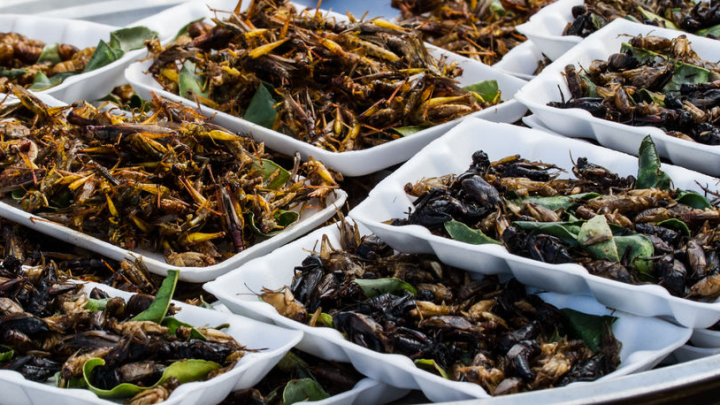
Developers aren’t just crunching data these days — employees of tech companies in the region have taken to snacking on crickets at work.
The six-legged meals are known to be high in protein and iron, and are sustainable alternatives to beef and chicken, San Jose Mercury News writer Marisa Kendall said in a feature story published earlier this month.
“It’s a movement that has people buzzing, with companies such as San Francisco-based Bitty Foods baking the bugs into cookies and chips, Tiny Farms in San Leandro breeding crickets for mass consumption, and New York-based Exo using them in protein bars,” she wrote. “The products are showing up in Silicon Valley break rooms, and investors and entrepreneurs are paying close attention.”
While the “health fad” is just catching on in the United States, the delicacy has long been tradition in countries like Mexico — in fried form, called chapulines — and as a common street food in Thailand, alongside silk worms and other creepy crawlies you wouldn’t be happy to find in your house. Getting over the culture shock has been tough for some.
“The very first time I had crickets it was a little bit weird. And you always have in the back of your mind, ‘I wonder if there’s an antenna in this bar,’” Bridget Sauer, who works in the San Francisco office of online custom T-shirt making platform Teespring, told Kendall.
Kendall points to a 2013 report by the Food and Agriculture Organization as the potential cause for the cricket-to-plate movement in American tech offices.
“The report touted the nutritional benefits of insects and introduced them as a potential solution to a rapidly approaching problem — the world will house 9 billion people by 2050, forcing humans to nearly double their food production using a limited supply of land and water,” Kendall wrote.
Because crickets require “12 times less feed than cattle and half as much as chickens to produce the same amount of protein,” the report lists them as a viable — and crunchier — alternative. In addition, crickets need less water and space to farm, they produce fewer greenhouse gases, and can be fed organic waste, proving better for the earth as well.
“Edible insects are one of the most sustainable forms of protein on the planet,” said Megan Miller, co-founder of Bitty Foods.


